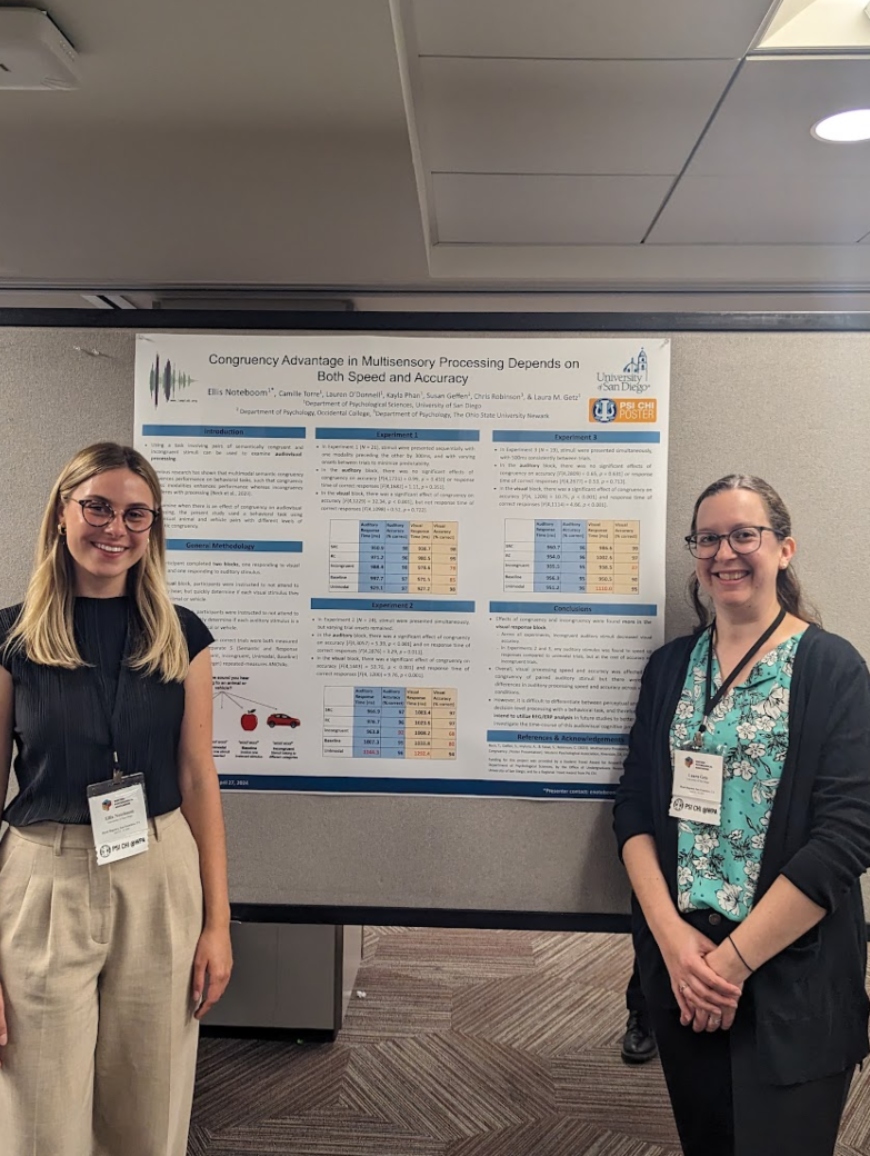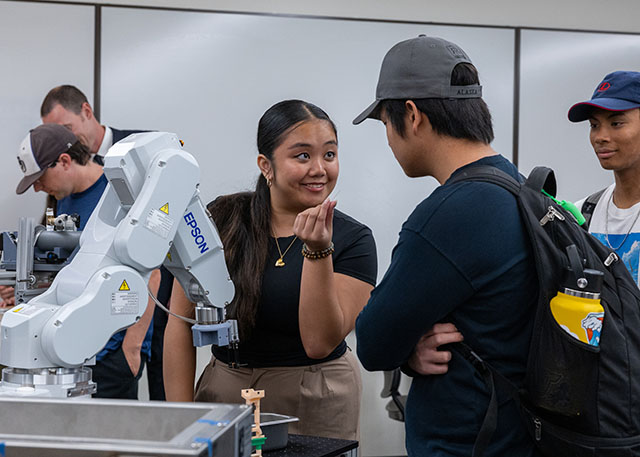STAR Award Recipient Ellis Noteboom Presents Research at WPA Convention
 Ellis Noteboom and Laura Getz, PhD, with Noteboom's poster
Ellis Noteboom and Laura Getz, PhD, with Noteboom's posterEllis Noteboom is a senior majoring in behavioral neuroscience and minoring in biomedical ethics. With funding support from the Psychological Sciences' Student Travel Award for Research (STAR) and the Office of Undergraduate Research, Noteboom was able to present her research, “Congruency Advantage in Multisensory Processing Depends on Both Speed and Accuracy,” at the Western Psychological Association (WPA) Convention in San Francisco, California. Attending WPA was enriching and inspiring to Noteboom, "Engaging with fellow student researchers to exchange ideas was an invaluable opportunity that expanded my appreciation for psychology research. Attending speaker events was inspiring and allowed me to envision what a future pursuing various psychological careers could look like. Additionally, presenting my own poster was such a gratifying experience as the culmination of my research experience at USD. My weekend at WPA was definitely a highlight of my undergraduate experience!"
Read Noteboom's abstract below:
Navigating the world around us requires rapid organization of complex perceptual inputs across different sensory modalities to create a unified perception of our environment. Using a task involving pairs of semantically congruent and incongruent stimuli, previous research has shown that multimodal semantic congruency influences performance on behavioral tasks, such that congruence across modalities enhances performance whereas incongruence interferes with processing (Beck et al., 2023). To examine when there is an effect of congruency on audiovisual processing, the present study used a similar behavioral task using audiovisual animal versus vehicle pairs with five levels of semantic congruence. “Semantic response congruent” trials refer to both stimuli representing the same identity (dog image and bark sound). In “response congruent” trials, stimuli represent the same category but not the same identity (dog image and meow sound). “Incongruent” trials belong to different categories (dog image and train sound). “Baseline” trials involve an irrelevant stimulus (dog image with pinball sound). “Unimodal” trials consist of only one modality (dog image with no sound).
Each participant completed two blocks, one responding to visual stimuli and one responding to auditory. In Experiment 1 (N=21), stimuli were presented sequentially with one modality preceding by 300ms, and with varying onsets between trials to minimize predictability. In Experiment 2 (N=24), stimuli were presented simultaneously, but varying trial onsets remained. In Experiment 3 (N=19), stimuli were presented simultaneously, with 500ms consistently between trials.
Effects of congruence and incongruence were found more in the visual response block. Across all experiments, incongruent auditory stimuli decreased visual accuracy. In Experiments 2 and 3, any auditory stimulus was found to speed up responses compared to unimodal trials, but at the cost of accuracy on incongruent trials. Overall, visual processing speed and accuracy was affected by congruency of paired auditory stimuli but there were no differences in auditory processing speed and accuracy across visual conditions.
However, it is difficult to differentiate between perceptual and decision-level processing with a behavioral task, and therefore, we intend to utilize EEG/ERP analysis in future studies to better investigate the time-course of this audiovisual cognitive processing.
Contact:
Psychological Sciences Department
Psychology@sandiego.edu
619-260-4511



